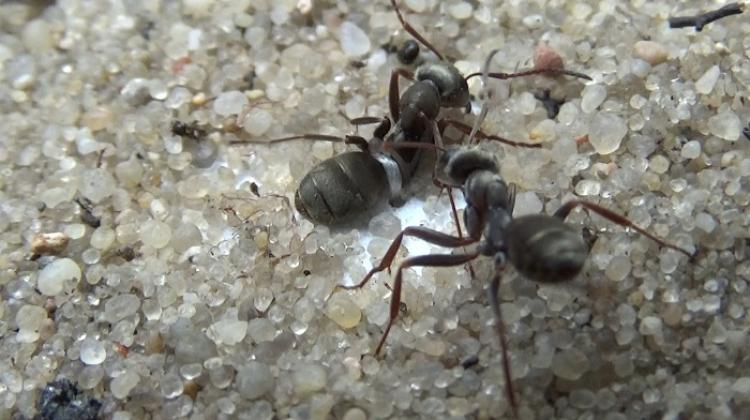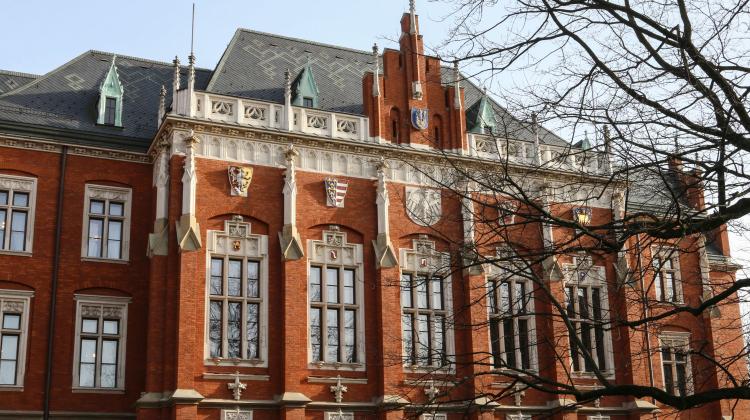The first Polish archaeological research project in Burkina Faso
Some of the oldest known traces of settlements known to date in the region, as well as new information on the Kurumba community - these the biggest successes of this year\'s Polish first archaeological research in Burkina Faso in West Africa.
"Burkina Faso remains a blank spot on the archaeological map of Africa - so far only random excavations have been carried out here. The research project we have started may shed new light on the history of this country since the beginning of human presence in this place" - said in an interview with PAP Krzysztof Rak from the Institute of Archaeology of the Jagiellonian University in Kraków, one of the initiators of the research project carried out in the northern part of the country.
Polish scientists have been studying communities of Burkina Faso for years - director of the Municipal Museum in Żory, Dr. Lucjan Buchalik invited archaeologists to join his research. In addition to Krzysztof Rak, Bogusław Franczyk of the Institute of Archaeology, University of Warsaw also participated in the project.
During the first season (October and November), archaeologists chose locations to carry out excavations. They focused on Pobé-Mengao department in northern Burkina Faso. "This area is inhabited by the Kurumba - the people that arrived there a few hundred years ago, perhaps from today\'s Mali or Niger. It is not clear whether it was in the thirteenth or perhaps in the sixteenth century - it is still a matter of dispute among ethnologists. We hope that archaeological research will help to solve this puzzle" - said Rak.
He explained that the Kurumba community counts approx. 300 thousand people. Scientists draw attention to a very extensive mythology of the Kurumba. According to the mythology, their ancestors arrived in the northern part of Burkina Faso in an "iron house". On arrival they subjugated the local population called Berba and created their own kingdom. In the eighteenth century - that we know from ethnological sources - the Kurumba were dominated by the Mossi, but have maintained the old chiefly system headed by the king. While researchers know the list of all the rulers of the Kurumba kingdom - Lurum, it is not clear for how many years each of them had ruled.
Already the first season of work has brought interesting results. Archaeologists conducted surface surveys involving the search for objects such as fragments of pottery on the surface. They found objects including flint tools and waste resulting from processing flint. According to archaeologists, they come from approx. 50-15 thousand years ago. "This is one of the oldest known traces of human presence in this country" - believes Rak.
Archaeologists also focused on the long abandoned settlement Damfelenga Dangomde in the form of a tell (artificial mound formed as a result of settlement from the accumulated remains of, for example, crumbling walls of mud brick houses). So far it was only known that the site was inhabited until the end of the nineteenth century, and then the Kurumba moved to the contemporary capital - Pobé-Mengao.
During surface survey, the scientists discovered artefacts indicating that the tell had been inhabited since the turn of the eras, long before the arrival of the Kurumba - said Rak.
Polish archaeologists were also surprised to discover a necropolis of burial mounds in the vicinity of the tell. Until now, the place was known in the local communications as an abandoned... village.
"It turned out that it was a wrong identification. The mounds of stone and earth that we have studied are approx. 1300 years old" - reported the archaeologist from Kraków. Several dozen such structures are buildings visible in the field to this day. The largest of them is nearly 2 meters high.
Scientists are hoping that they will be allowed to carry out excavations within the royal necropolis, which is located next to the legendary "iron house". "This area is inaccessible to tourists and subject to local taboo. Therefore, conducting research there would be a huge challenge" - said Rak.
This year\'s research was carried out in collaboration with the director of the Musée du Korum-Wonda, Adama Sawadogo.
PAP - Science and Scholarship in Poland, Szymon Zdziebłowski
szz/ zan/ mrt/
tr. RL
Przed dodaniem komentarza prosimy o zapoznanie z Regulaminem forum serwisu Nauka w Polsce.


















